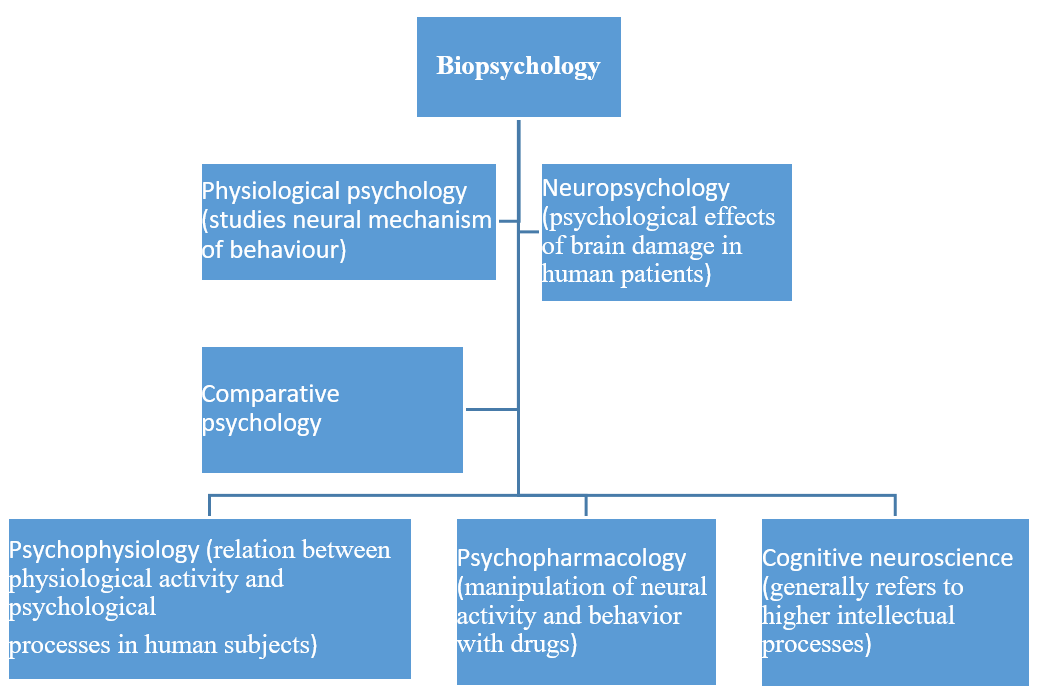As an academician, I have never stopped to ponder on the topic of biopsychology. To begin with, the term biopsychology may be elucidated as a branch in psychology that focuses on the manner in which the human brain affects our thoughts, behaviours and emotions (Cherry, 2013, p.1). A number of authors have given different definitions. Nonetheless, the definition above provides sufficient grounds for an academic discussion on the topic in question.
There are mainly six divisions in biopsychology. These divisions can be categorized as physiological psychology, neuropsychology, comparative psychology, psychophysiology, psychopharmacology and cognitive neuroscience. That said this work provides a chart on the six divisions of biopsychology, the typical research for each division, a discussion on the six divisions and a reflection on the six divisions.

From the chart above, one can get an idea of the research areas on the six divisions. Nonetheless, it is critical that every scholar has an opportunity to understand all the divisions in biopsychology. To begin with, comparative psychology gives biopsychologists the grounds to analyse the science of behaviour as opposed to the neural systems of behaviour. This is achieved by comparing the traits of distinct species with an aim of appreciating the genetics, adaptation of behaviour, and evolution.
Secondly, cognitive neuroscience is the most recent division in biopsychology. This division provides the grounds for studying the neural bases of recognition (Pinel, 2009, p. 38). Apparently, this division can be appreciated as the higher intellectual process like attention and memory. Since it this division deals with cognition, its main research involves the human brain.
Next on the list is physiological psychology. This division deals with the neural systems of behaviour via the express management of the brain cells in experiments. The experiments generally apply electrical and surgical methods. Since this division deals with how brain cells are manipulated, laboratory animals are frequently used in research. Another division in biopsychology is known as psychopharmacology.
It is similar to physiological psychology although it deals with manoeuvring of neural actions and behaviour with drugs. Apparently, a majority of researchers in this division were early physiological psychology. This was before they shifted to drug research. In short, researchers in this division study the impact of drugs on animals and humans (Pinel, 2009, p. 102). Another important division in the field of biopsychology is the neuropsychology division. Neuropsychology deals with psychological impacts of brain dents in humans. Since humans cannot be exposed experiments that threaten the normal brain functions.
That said neuropsychology is exceptional to quasi experiments and case studies of individuals with brain damage because humans cannot be exposed to injuries intentionally. It is the most applied division in biopsychology as it aims at providing benefits to the human race.
Finally, psychophysiology examines the connection involving the psychological process and the physiological activities in humans. Research in this division focuses on appreciating the physiology of psychological processes (Fernald, 2007, P. 91). These psychological processes include information processing, emotions and attention. Nonetheless, there has been a variety of intriguing clinical applications in this division.
In summary, one can clearly identify the six divisions in biopsychology. After a serious analysis on the six divisions, my opinion is that cognitive neuroscience is a very interesting division. This owes to the fact that this division is in use to measure the intelligence of a given individual. However, since cognitive neuroscience is still developing, this division calls for constant research to ensure efficiency.
References
Cherry, K. (2013). What Is Biopsychology? Web.
Fernald, D. (2007). Psychology: six Perspectives. New York: Sage Publications.
Pinel, J. P. A. (2009). Biopsychology. Boston: Allyn and Bacon.